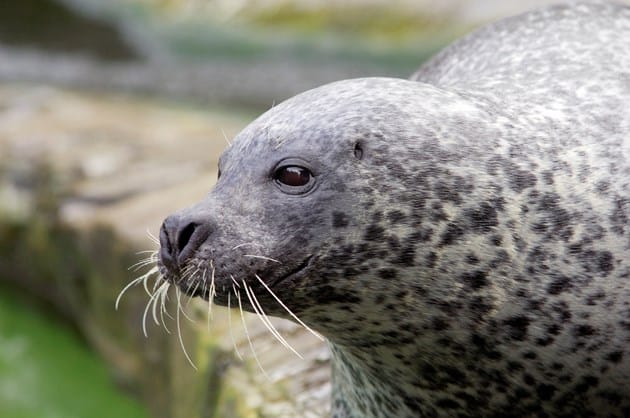A full census reveals Scotland’s harbour seals are doing well overall but there remains a striking divide between east and west coast populations.
NatureScot has published the results of the fifth full census of Scotland’s harbour seals over the last 25 years.
Between 2016 and 2019 almost the entire Scottish coastline was surveyed by helicopter by the Sea Mammal Research Unit (SMRU) at the University of St Andrews.
During the most recent survey in August 2019, 26,846 harbour seals and 25,412 grey seals were counted – the second highest total ever recorded for harbour seals and the highest for grey seals.
Estimates based on these surveys suggest total populations in Scotland of around 37,300 harbour seals and 106,300 grey seals.
The data show that for harbour seals, there remain striking differences in population trends between different regions.
Northern and eastern coasts have seen significant declines since the early 2000s, with the most dramatic changes occurring around Orkney, in Shetland, and in the Firth of Tay and Eden Estuary.
In contrast, numbers in the west have been either stable or increasing. The latest counts show that more than three-quarters (78%) of all harbour seals in Scotland are currently found in the west.
This is a significant shift since the 1990s when Orkney and Shetland were the most important regions in Scotland for harbour seals.
Ongoing studies, funded by the Scottish Government, are attempting to identify the reasons behind the large regional declines, with possible causes under investigation including predation by orcas and grey seals, competition with grey seals, algal toxins and diseases.
Morven Carruthers, NatureScot Marine Ecologist, said: “This latest full census confirms the geographic east-west divide in the populations of harbour seals that we have seen over the last 20 years.
“Scotland currently holds around a quarter of all harbour seals found in Europe, so this long-term monitoring is crucial for helping us to identify population trends and work towards an understanding of what is behind them. This in turn will ensure we can better conserve and manage our important harbour seal populations.”
Dr Carol Sparling, Director of the Sea Mammal Research Unit: “This report represents a huge amount of effort from the SMRU survey team. The data collected over the whole five year period is essential to understand the status of our Scottish seal populations and to inform decisions about seal management and marine conservation.
“As a direct result of this work we have been able to develop a comprehensive research programme investigating the causes of these contrasting trends in different parts of Scotland.“The seal abundance and distribution data that this survey programme provides is also a very important part of the UK’s Marine Strategy, helping to achieve good environmental status of our marine environment.”





